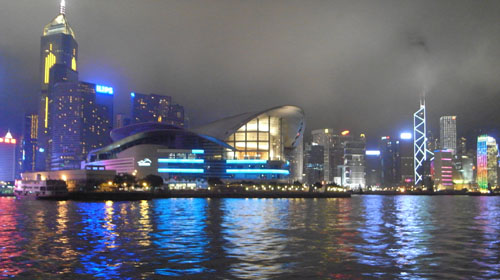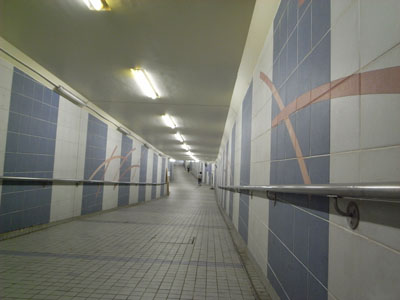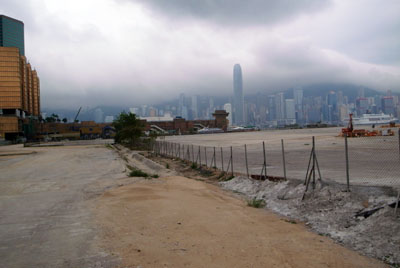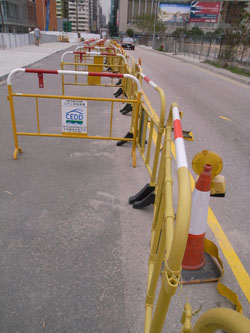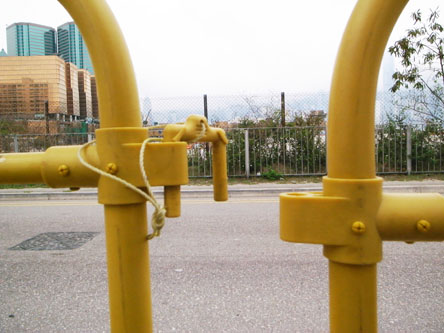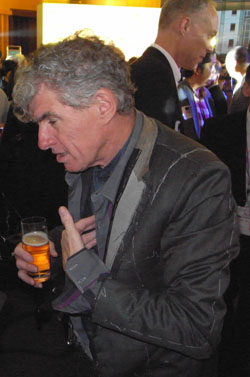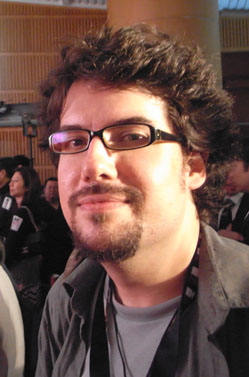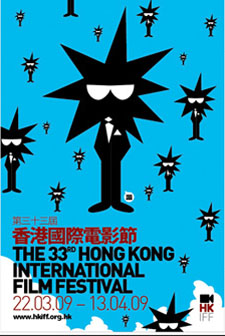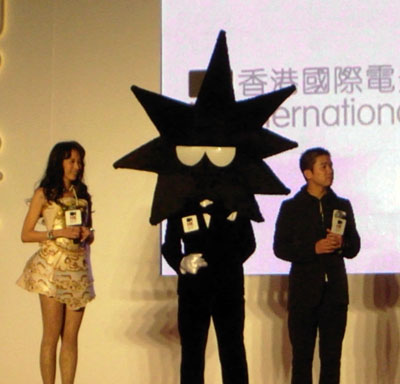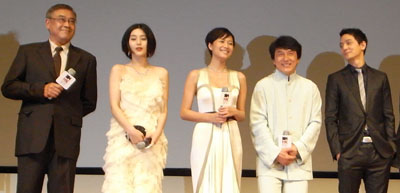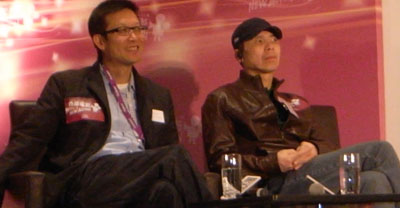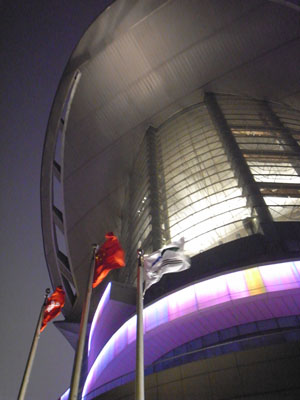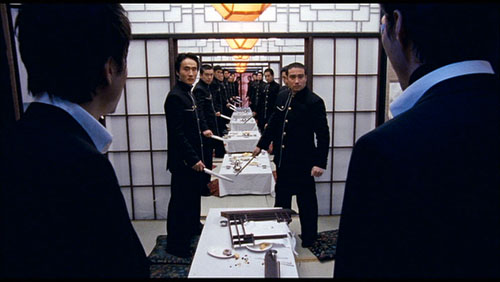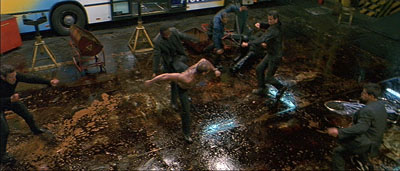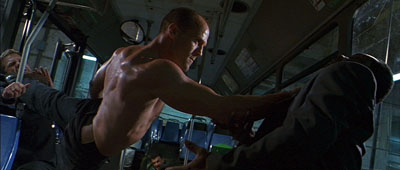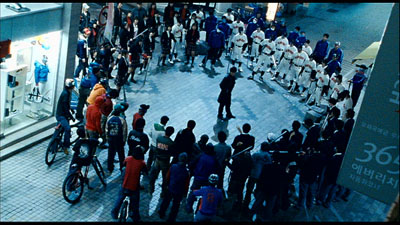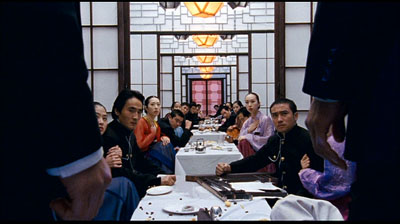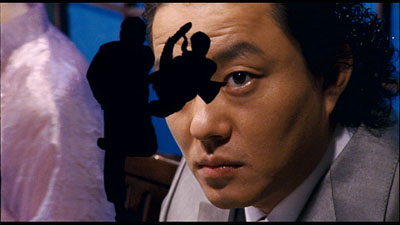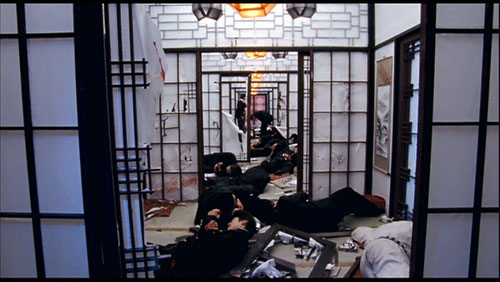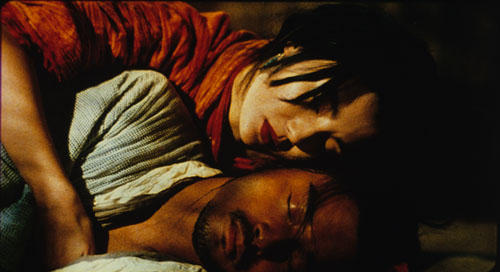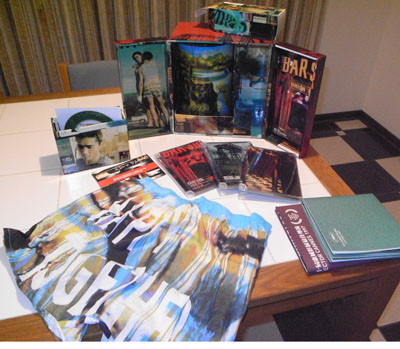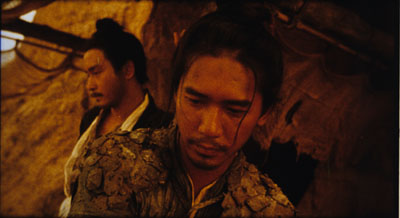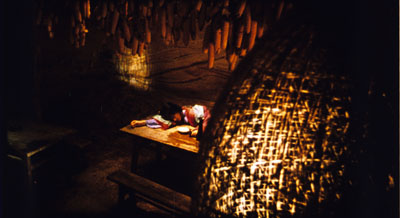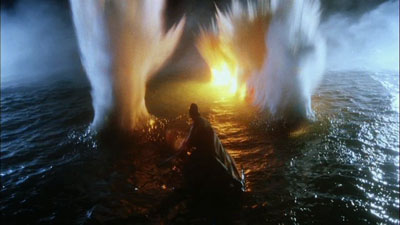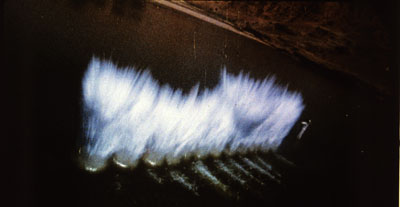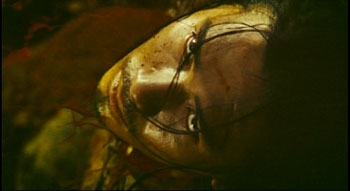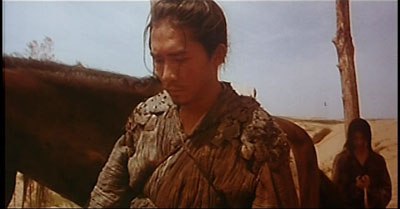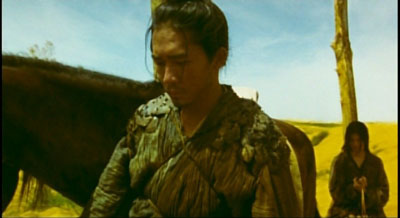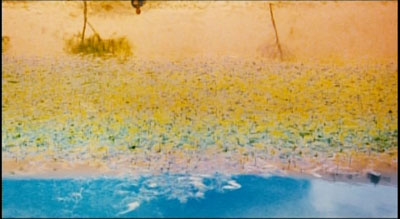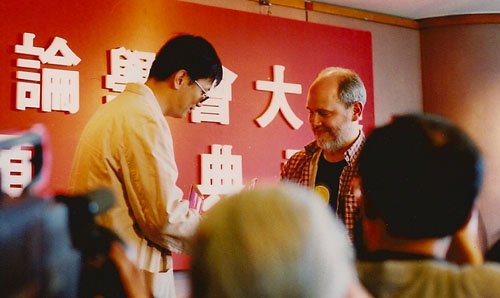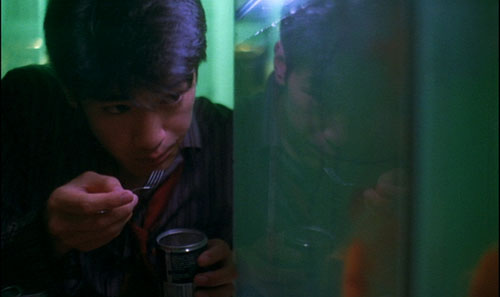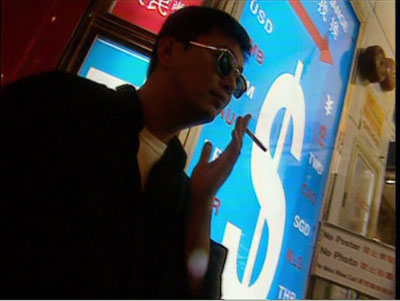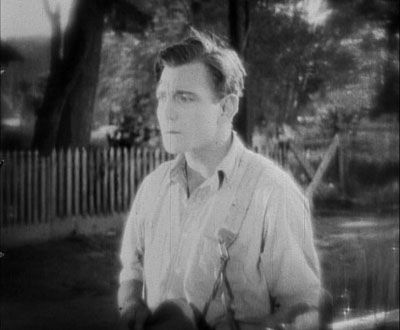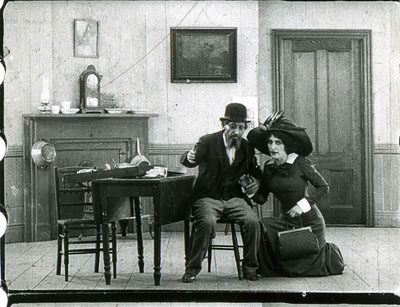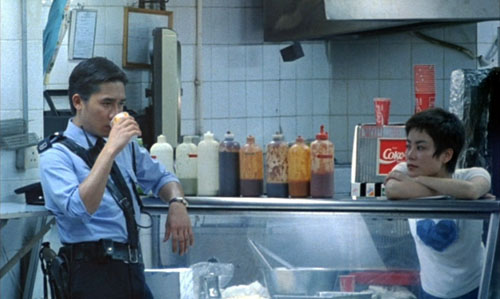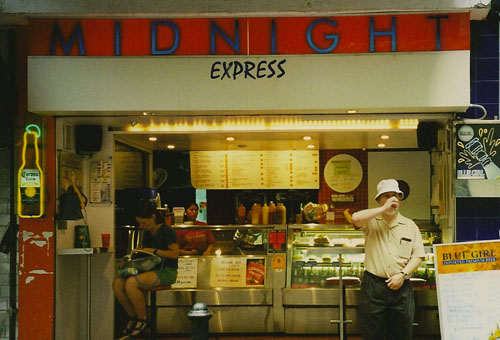Archive for the 'National cinemas: Hong Kong' Category
Jackhammers, parties, and markets
DB here:
No matter how often you see this Ur-touristic view, it’s still spellbinding. Yes, I’m back at the Fragrant Harbor for the annual festival, front-loaded with Filmart, the film market. My 2008 report starts here, and the 2007 one starts here. Plenty of entries for those years; I’m not sure I’ll be able to roll out so many this time, but we’ll see.
Start with the first impressions. Massive building projects and new traffic-flow strategies have made the tip of the Kowloon peninsula even more pedestrian-unfriendly than last year. Grim underground passages take you in loops away from your destination. No more direct routes anywhere, it seems, and construction projects I’ve watched for years continue to be unfinished. From the twenty-first story of my hotel I can hear a jackhammer at street level.
A striking case: My hotel is rather close to a multiplex in West Kowloon, located in an upscale mall called Elements. (More on Elements in a later communiqué.) But around this trendy spot stretches a vast vacant lot.
Again, there’s a lot of pedestrian control, including barriers to keep you from crossing the street. Still, it’s not hard to find places where enterprising passersby, perhaps armed with blades, have broken on through to the other side.
Moreover, the Star Ferry to Wanchai still offers a pleasantly sustained ride and the usual spectacular views, even in the rain and mist that have enveloped my first days here.
Wanchai is the location of Filmart, set up in the Convention Centre, the mammoth swooping building seen at the top and bottom of this entry. As usual, Filmart was stuffed with seminars, screenings, and dealmaking, as well as the Asian Film Awards.
The opening of Filmart included a party, where you could find Chris Doyle, accompanied by a beer, rubbing shoulders with Stefan Borsos, editor of the German magazine CineAsia.
The party got stranger. This year’s festival logo is a dude in black tie with a black starburst head and a hollow look around the eyes. I thought he was only a graphic design until Karen Mok brought him onstage.
He seems a saucy fellow, at least judging from his hand gesture here.
Filmart opened with a screening of Derek Yee‘s new film Shinjuku Incident. Before the show, Yee, on left, lined up with his cast. You can recognize at least one of the ensemble, grinning as usual.
In the following days, I saw several good movies: More on them in the next post in a day or so. I also attended some sessions devoted to technology and marketing. The effects company Digital Magic sponsored a demonstration of various digital formats, of which the Red system seemed to me the best. Digital Magic also gave out cute Viewmaster-like toys promoting their work.
 I learned things from this session and the one sponsored by Salon Films, but the main live event I hit was the Hong Kong Film New Action Forum, a day-long series of sessions about the future of Chinese film. The first item was a brief discussion moderated by director Gordon Chan (Beast Cop, Painted Skin; left). Two experts discussed the current status of CEPA, the Closer Economic Partnership Arrangement that allows Hong Kong productions to count as mainland ones for purposes of financing and distribution. Across the last few years, half or more of the top-grossing pictures, such as the Zhang Yimou costume epics and Peter Chan’s Warlords, have been CEPA-enabled coproductions. Other countries, such as Singapore, Japan, and Korea, are investing in such projects.
I learned things from this session and the one sponsored by Salon Films, but the main live event I hit was the Hong Kong Film New Action Forum, a day-long series of sessions about the future of Chinese film. The first item was a brief discussion moderated by director Gordon Chan (Beast Cop, Painted Skin; left). Two experts discussed the current status of CEPA, the Closer Economic Partnership Arrangement that allows Hong Kong productions to count as mainland ones for purposes of financing and distribution. Across the last few years, half or more of the top-grossing pictures, such as the Zhang Yimou costume epics and Peter Chan’s Warlords, have been CEPA-enabled coproductions. Other countries, such as Singapore, Japan, and Korea, are investing in such projects.
The other session I attended was more high-profile. Philip Chan, screenwriter and former cop, moderated a discussion among John Woo, Oliver Stone, Andrew Lau Wai-keung, and Feng Xiaogang. The Chinese directors talked about the market. Stone talked about creativity. This division of labor reminded me of what Bernard Shaw supposedly told a Hollywood producer: “The problem is that you are only interested in art, and I am only interested in money.”
 Woo took the floor with a long discussion of making Red Cliff. He made the usual point about wanting to wed Chinese stories to Hollywood production values. Some other items:
Woo took the floor with a long discussion of making Red Cliff. He made the usual point about wanting to wed Chinese stories to Hollywood production values. Some other items:
*He built the project to have marketing appeal, designed both for Asian and western consumption. For instance, strong women appeal to female viewers in all countries. He claimed that one reason that Red Cliff broke attendance records in Japan was the support of women audiences.
*Woo also wanted to bring audiences in Hong Kong and China back to local films, away from Hollywood imports. Viewers, he claims, are bored with Hollywood’s formulas and want something fresh and authentic. But local audiences are getting tired of Chinese blockbusters too, so in Red Cliff Woo introduced humor along with Hollywood-level production values.
*He suggested that before making Red Cliff he had considered retiring. Now he’s planning more projects.
Lau and Feng likewise took up practical considerations. Lau said that filmmakers must go where the market leads. He suggested there was a period when Hong Kong filmmakers went to Hollywood, but now that route is risky. At the moment, the market is the Mainland, not the West. He was not rueful about his own experience in Hollywood (with The Flock), but he treated it as a chance to learn “a different set of rules. Every place has its own rules.” He also spoke of the unexpected success of Infernal Affairs, a “back-to-the-wall” effort that seemed risky in the market decline of the 2000s. No one expected the film to be so successful; the actors cut their asking prices to be in it.
Feng Xiaogang, Mainland director of Cell Phone and A World without Thieves, lived up to his reputation for stirring things up. Announcing that Hong Kong people “consider the Mainland a four-letter word,” he rattled off an account of the current PRC market. Feng indicated that a $20 million film can presently break even in the domestic market. This prospect interested me, because such benefits are rare in the history of movies. As film students know, the US used its big domestic market as a base to launch vast overseas distribution.
Box-office income is growing fast, but there aren’t enough screens. He claimed that there were about 4000 in the country, an absurdly small number for such a populous country. (Probably this figure counts only modern screens, not old or temporary ones.) The key, Feng suggested, was capitalizing the building of still more screens, especially in the 350 “small” cities. The government will subsidize theatre construction to some extent.
If 1000 more screens are added, Feng speculated that in five years the annual box-office receipts could hit 30 billion RMB. That’s about $4.5 billion, somewhat less than half of the 2007 US box-office take—but twice as much as the income in Japan for the same year. China is developing into a prepossessing market.
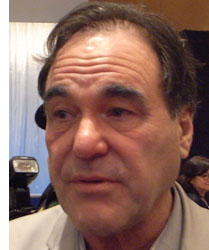 Finally, Oliver Stone confessed his love of Asian films, singling out their “iconic imagery” (Crouching Tiger, even Woo’s Face/Off) and lyricism (Ozu, Wong Kar-wai). His advice: Don’t withdraw from engagement with the West and “Make films that pop their eyeballs out.”
Finally, Oliver Stone confessed his love of Asian films, singling out their “iconic imagery” (Crouching Tiger, even Woo’s Face/Off) and lyricism (Ozu, Wong Kar-wai). His advice: Don’t withdraw from engagement with the West and “Make films that pop their eyeballs out.”
One theme I took away was the way in which regionalism continues to rule the Asian industries, a topic I raised in Planet Hong Kong and in late chapters of Film History: An Introduction. Who needs Western markets if the PRC market continues to swell and if other territories in the area hold up their end of financing, distribution, and the occasional regional hit? As far as mass-market cinema is concerned, we may be moving toward a bipolar world, with North America at one pole and Asia at the other. For an excellent, fact-filled analysis of the implications of this trend toward regionalism, see Darrell William Davis and Emilie Yueh-yu Yeh’s brand-new study, East Asian Screen Industries.
Soon, very soon, we go to the movies.
Screen Digest offers some slightly older statistics on the Mainland market here. For more recent information on Chinese exhibition in a worldwide context, see “Exhibition Breaks Revenue Record,” Screen Digest (September 2008), 274. The number of screens cited here is far greater, perhaps because it counts all the rural, unmodernized, or temporary venues. Karen Chu of the Hollywood Reporter sums up the New Action Forum event here.
Hong Kong Convention Centre.
A glance at blows
DB here:
Perhaps it came from watching the Odessa Steps sequence, projected in hazy 8mm, on the bedroom wall during my teenage years. Or maybe it was seeing my first Bruce Lee movie in the early 1970s. In any case, at some point I became a connoisseur of action sequences. Eventually I was able to indulge this tendency by writing about Eisenstein, but also by studying Asian action film.
I became convinced that martial arts movies from Japan and Hong Kong constituted as important a contribution to film aesthetics as did the Soviet Montage movement. Through shot-by-shot and even frame-by-frame analysis, I tried to show that these movies were exploring ways that cinema could arouse us kinesthetically. Their use of composition, cutting, color, music, and physical motion was not only beautiful but also engaging on levels that we didn’t fully understand. (Perhaps now that we know about mirror neurons we’re in a better position.) Certain turns in the action make us laugh, but not in derision. We laugh in jubilation, and sometimes out of admiration for sheer audacity. At their most ambitious, these films achieved the physical-emotional ecstasy that Eisenstein found in sharply executed “expressive movement.”
A jolting blur
So it was with a definite sadness that I watched, from the 1980s onward, the tendency of American filmmakers to give up on rendering physical movement with full force. Action sequences became jumbled arrays of short shots and bumpy framings. The clarity and grace of motion seen in classic Westerns and comedies, in the work of Keaton and Lloyd and Ford and Don Siegel and Anthony Mann, gave way to spasmodic fights and geographically challenged chases. At first, the chief perpetrators were Roger Spottiswoode and Michael Bay. Now it’s nearly everybody, and journalistic critics have recognized that this lumpy style has become the norm, even in the generally admired Bourne entries.
Classic Hong Kong and Japanese action scenes were “expressionistic” in the sense that their larger-than-life balletics and aerobatics amplified recognizable (if extreme) possibilities of the human body. The result was a carnal cinema, in which shooting and cutting aimed to enlarge and prolong graceful movement. By contrast, Hollywood action scenes became “impressionistic,” rendering a combat or pursuit as a blurred confusion. We got a flurry of cuts calibrated not in relation to each other or to the action, but instead suggesting a vast busyness. Here camerawork and editing didn’t serve the specificity of the action but overwhelmed, even buried it.
Why is the filmmaker reluctant to face the concrete, moment-by-moment facts of the fight? Maybe it’s fear of censorship, or maybe it’s just lack of interest in physical processes. By contrast, most of the great Hong Kong action directors have been themselves martial artists. To them a fight is a suite of tangible actions and micro-actions. Or maybe the new muddier approach seeks to hide the fact that the action is preposterous. Western audiences don’t like far-fetched action that isn’t comic, but the new action picture is touted as a return to realism. Bond is tough and Jason Bourne’s adventures are “gritty.” Yet realism comes at a price, in this case the loss of bodily movements elegant in their efficiency.
Defenders of the impressionistic approach say that it renders “what the action feels like.” But that would entail that the action feels fast and confusing. To whom? Maybe to a duffer like me, if I were dropped into the melee, but not to trained fighters. Bourne isn’t confused: his senses are alert, and his gestures are economical and smooth. So why render the scene as chaotic and show his gestures in jerky cuts? Any fighter overcome by the sensory overload handed to us would lose big.
The classic Asian approach also tries to make us experience how the action feels, but it starts by taking pains to show how it looks. Hong Kong filmmakers constructed a sequence on a firm foundation, and that meant making each shot impossible to misunderstand. They then built those crisp images into what I called the pause/ burst/ pause structure. This simple pattern, capable of great variation. creates a staccato exhilaration.
How? Here’s a first approximation. The stylistic orchestration of the fight trips off optical, auditory, and muscular responses in our bodies, while the pauses give the movement a chance to echo. Instead of a vague busyness, a sense that something really frantic but imprecise is happening, we get a marked rhythm alternating an exact visceral impact with tingling aftereffects. Eisenstein believed that when we see an expressive movement, we reflexively repeat that movement, albeit in weakened form. After one of these sequences you feel tired, but in a good way. We’ve been given a taste of what physical mastery feels like.
Transport
Compare the action scenes of the first Transporter film (2002) with those of Transporter 3 of this year. The first, directed by Hong Kong veteran Yuen Kwai (aka Corey Yuen), isn’t a patch on his best home-ground work (Ninja in the Dragon’s Den, Righting Wrongs, Yes, Madam!, Saviour of the Soul), but the bigger budget provided by Luc Besson gave him a chance to put Jason Statham through some energetic paces, particularly on the oil-slicked floor of a bus garage.
Yuen, a director who sacrifices even dialogue to pictorial rhythm, is fond of percussive insert shots (e.g., the garage scene’s crackling close-ups of Statham snapping bike pedals onto his shoes) and steep, tight angles that spread all of a fight’s players into a diagrammatic composition.
But Transporter 3, choreographed but not directed by Yuen, has buried precise, bone-whacking action under freeze-frames, superimpositions, ramping, color shifts, and other Tony Scott doodling.
Something more sober but just as nerveless is at work in Quantum of Solace. Here the jabbing handheld work of the Bourne pictures has been replaced by steadier framing and smoother traveling shots, but the hyperkinetic, what-did-I-just-see cutting is still there. Again, I think that the filmmakers are worried about the implausibility of the action scenes and so muffles them by a haphazard handling.
Back to basics
Most discouraging has been the way that many Asian filmmakers have taken up the Hollywood approach. Today’s standard Hong Kong action picture is likely to be as visually and kinetically disorganized as the Hollywood product. That’s why I can recommend, as a palate-cleanser if nothing else, Ryoo Sung-wan’s City of Violence (2006), a Korean film recently made available on DVD from Dragon Dynasty.
It is unapologetically formulaic. Pals in a teenage gang grow up to be gangsters and cops. Our protagonist, a big-city cop, returns to the hometown to discover that the weakest of the old crew has become a sadistic overlord. Fights ensue, culminating in a twenty-minute battle in which the hero and another schoolmate penetrate a restaurant where the villain is celebrating his new status. Thrashing their way through a crowded courtyard, then through a narrow tunnel of dining rooms, and finally into a two-story banquet hall, our heroes confront increasingly skilful fighters and eventually face off against their boyhood friend.
Ryoo keeps the action scenes fairly brisk and inventive. The most impressive early one shows the hero surrounded by a battalion of young thugs in a nighttime boulevard. The teens, in an obvious bow to The Warriors, come dressed in ingenious uniforms and display alarming skills with hockey sticks and baseball bats. As in Hong Kong films, judicious long shots keep us oriented to phases of the action.
Borrowing unashamedly from John Woo’s Better Tomorrow series and countless Japanese swordplay films, City of Violence shows flashes of pictorial wit. The cop and his pal realize they’re confronting a platoon of bodyguards at supper when doors slide open to reveal a tunnel-vision perspective of fighters, blobs of black broken rhythmically by women’s pastel outfits.
The film flaunts vivid color and icy focus in a way that much more expensive Hollywood genre movies, with their brackish palettes and soft edges, mostly avoid. (The realism alibi, again.) Even Ryoo’s use of CGI is playfully pretty, in a way that Casino Royale could be only in its credits sequence. Here the gang lord realizes his old pals are approaching.
I don’t want to oversell this film, but it does show that the classic Asian tradition has not expired. Running under ninety minutes without credits, City of Violence aims at nothing more than telling a familiar story with vigor—along the way making us gape and flinch. In a good way.
For arguments about Eisenstein and expressive movement, see my Cinema of Eisenstein, new ed. (Routledge, 2005). The case for Japanese and Hong Kong action films is made in Chapters 12-15 of Poetics of Cinema, and the pause/ burst/ pause pattern is analyzed in Chapter 8 of Planet Hong Kong: Popular Cinema and the Art of Entertainment. There, among other things, I try to give Yuen Kwai his due.
Ashes to Ashes (Redux)
DB here:
Hong Kong films constantly shift their shapes. Both film prints and video versions circulate in a bewildering variety of forms. A movie shot in Cantonese (the vernacular of the locals) may be dubbed into Mandarin, the language of the Mainland and of Taiwan. But it may also be dubbed into English, French, or other Western languages; such was the fate of many kung-fu films of the 1970s, as well as later productions like The Killer (1989). I have seen Happy Together in Italian and In the Mood for Love in Spanish. When a movie is exported, it may also be recut to suit the local market. Typically Hong Kong producers have sold films under terms that allowed foreign distributors to do pretty much what they liked with both theatrical and video releases.
Alternatively, the filmmaker may cooperate and remake the film to fit foreign tastes. During the boom years of the 1980s and early 1990s, when many films were funded through presales to Taiwan, it was common to have both a Taiwanese version (usually longer) and a Hong Kong one. Jackie Chan’s Police Story (1985) included extra scenes of Jackie’s antics to satisfy Japanese audiences, and the directors of Infernal Affairs (2002) provided a less desolate ending to satisfy Chinese censors. In addition, filmmakers began circulating “international versions” that would play film festivals, and these might not accord with what was released locally. I’ve discussed one instance earlier on this blog: a version of Days of Being Wild that includes opening material not visible in the international print. My current supposition is that this is a local release print that may have circulated in Western Chinatowns too.
To complicate things further there was the institution of the midnight show. Instead of holding test screenings, Hong Kong producers would preview their films at a few theatres late on weekend nights. Audiences knew that they were acting as guinea pigs and weren’t shy about expressing their displeasure. While filmmakers cringed in the back, viewers might shout insults at the screen. The producers and the director would meet to settle on what changes should be made. Then they would hustle to prepare new versions for the official release in the next week or two.
On top of this, add the next layer of revision: the post-festival rethink. Western directors have redone their movies after discouraging festival response. Probably the most famous instance is the death and resurrection of Vincent Gallo’s The Brown Bunny (2003).Now that Hong Kong and Taiwanese directors circulate on the fest scene, they too have tinkered with their work after premieres, notably Hou Hsiao-hsien, who has reworked films following less than enthusiastic Cannes screenings.
A director’s job is never done?
Like many Hong Kong movies, nearly every one of Wong Kar-wai’s films went through multiple versions. But unlike many directors he seems to enjoy tweaking and rethinking his work. In production he shoots scenes, watches them, reshoots them, recuts them, and reshoots again. Editing and mixing involve the same play with variants. He adds different shots, juggles the order, adds or subtracts music at will.
The process may seem to betray an uncertainty about what he wants his movie to be. For In the Mood for Love, he shot scenes of the central couple making love but didn’t use them, playing with the possibility that the affair is chaste. 2046 began as a high-concept project, based on the fifty-year expiration of the 1997 handover accords, and it went through many different incarnations. At one point it was to be a tale of the intertwining lives of different Hong Kong citizens whose addresses were 2046 on their streets. Even the actors may not know what’s up. At the Cannes premiere of 2046, Maggie Cheung was startled to learn that she was barely in the movie.
Of course most filmmakers rediscover their films at each stage of production, but for Wong the idea of a “locked” version is fairly indeterminate. Virtually everyone now acknowledges that a Wong festival premiere is a first approximation. Delivered in the nick of time (sometimes embarrassingly late), the film is likely to be reworked after initial screenings. Venice and Cannes, Tony Rayns points out, have served as counterparts to the local midnight shows.
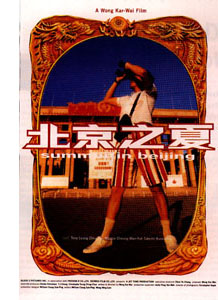 In Planet Hong Kong I suggested that Wong became a shrewd guardian of his brand. He has created high-end ancillary products, not only CD soundtracks but posters, T-shirts, glossy photo books, and limited-edition DVD sets. The Happy Together anniversary box (limited to 2046 units) includes a model of the spinning Iguazu Falls lamp and a pair of men’s briefs. The spinoffs are issued with fancy packaging, and they have usually sold briskly in upscale Asian shops, particularly in Japan. It’s characteristic that Wong’s aborted project Summer in Beijing could serve as a corporate travel logo. At once cult filmmaker and luxury franchise, Wong has every reason to refresh, and re-market, his content at intervals.
In Planet Hong Kong I suggested that Wong became a shrewd guardian of his brand. He has created high-end ancillary products, not only CD soundtracks but posters, T-shirts, glossy photo books, and limited-edition DVD sets. The Happy Together anniversary box (limited to 2046 units) includes a model of the spinning Iguazu Falls lamp and a pair of men’s briefs. The spinoffs are issued with fancy packaging, and they have usually sold briskly in upscale Asian shops, particularly in Japan. It’s characteristic that Wong’s aborted project Summer in Beijing could serve as a corporate travel logo. At once cult filmmaker and luxury franchise, Wong has every reason to refresh, and re-market, his content at intervals.
Yet I don’t maintain that he’s insincere. His drive to redo his films seems to go beyond indecision or commercial calculation. Wong seems to have taken to heart his central theme of the transient moment, the fact that love can be extinguished at any instant. So why not change your films to match your mood today? Further, like Warhol, he seems to enjoy prodigality for its own sake. He enjoys conjuring up one variation after another, multiplying just barely different avatars, and draping in mist the notion of any original text. His films’ basic constructive principle—the constant repetitions that create parallels and slight differences, loops of vaguely familiar images and sounds and situations—gets enacted in his very mode of production.
So he rebuilds even after release. The DVD release lets him tack on unused materials, extra scenes and different endings. That’s enough for most directors, but Wong has long harbored the dream of compiling vast swatches of unused footage in a sort of variorum DVD set of all his films. But why should he have all the fun? He once announced plans to put his footage for Happy Together on the Internet and let anyone make a personal version of it. That didn’t happen, but he did allow his assistants to make Buenos Aires Zero Degree (1999): not only an essayistic making-of but also a handsome reliquary of discarded material, including a gorgeous sequence of two taxis arcing away from each other.
Evil East, Malicious West, and their posse
Now we have Ashes of Time Redux, premiered at Cannes and showing in the US. The most apparent analogies, the oft-revised Blade Runner and the other redux, Apocalypse Now, don’t do justice to Wong’s fussbudget impulses.
For the original Ashes Wong assembled a high-wattage cast that included two of the Heavenly Kings of Cantopop and three glamorous female stars. He spreads out their duties by means of an ensemble plot. At the center stands Ouyang Feng (Leslie Cheung Kwok-wing), a swordsman who has set up a way station on the edge of the desert. He acts as a broker for people who want to hire killers. Another swordsman, Huang Yaoshi (Tony Leung Kar-fai) visits him every year. Ouyang nurses unrequited love for his brother’s wife (usually known as the Woman, played by Maggie Cheung Man-yuk), who lives far away. Huang is also subject to the Woman’s charms, but he is more deeply in love with Peach Blossom (Carina Lau Kar-ling), a woman he saw bathing her horse in a river. Peach Blossom is the wife of yet another wandering swordsman, who is gradually growing blind (Tony Leung Chiu-wai). He too fetches up at Ouyang’s outpost. Huang also runs afoul of the Murongs, a brother and sister who may be the same person (Brigitte Lin Ching-hsia). Meanwhile, a young girl (Charlie Yeung Choi-nei), fortified only with a mule and a basket of eggs, waits at Ouyang’s cabin to hire someone to avenge her brother’s death. Finally, there is Hong Qi (Jacky Cheung Hok-lau), a down-at-heel young killer for hire, who is followed across the desert by his wife.
The interlocking love triangles around a narcissistic man recall Wong’s breakthrough film, Days of Being Wild (1990), although here the parallels and connections are fleshed out through kinship too. The basic relations are at first hard to parse, though a Western viewer who didn’t recognize these stars will have more trouble than a Chinese one. Wong complicates the exposition by fragmenting his scenes and inserting flashbacks, though most of the latter are easy to follow.
He also helps the audience by following a common Hong Kong storytelling principle: reel-by-reel plotting. This breaks the movie into fairly discrete chunks of ten minutes (about a reel) or twenty minutes (about two reels). The first reel sets up the central relation of Ouyang Feng and Huang Yaoshi. Then two reels are devoted to the Murongs and their efforts to trap Huang. The next two reels are spent on the Blind Swordsman, followed by two reels devoted to Hong Qi and the Egg Girl. The last two reels unearth the long-simmering relationship among Ouyang, the Woman, and the despairing Huang. So the plot is actually a bit tidier than it seems at first, although each of these chunks is marbeled with references to other story lines. In Redux, Wong has also divided the plot into seasons, a strategy that accentuates the multipart structure.
Now about all those versions. Preliminary confession: These comments are based on one 35mm screening, and my analytical points are based on a DVD screener.
Keeping it unreal
Before Redux, there were at least two versions of Ashes of Time. One premiered at the Venice festival of 1994, the other became the international standard version. The differences are striking.
The international version has several hyperactive swordfights quite early. In a prologue before the title credit, Ouyang Feng and Huang Yaoshi fight a duel. After that, each is given a combat sequence in which he takes on hordes of assailants. These sequences are rapidly cut, with exaggerated angles, accelerated or slowed motion, and pulsing freeze frames. At the end of the international version comes a brief, parallel epilogue showing the surviving warriors (Ouyang, Huang, Hong Qi, and Murong) in the midst of combat. This epilogue includes a tableau of Yin, the female Murong, writhing ecstatically on a bed of red blossoms.
It’s widely believed among Hong Kong film people that this international version was initially created for the regional market and overseas Chinatowns. Wong added swordplay sequences at the beginning and end in order to satisfy his Taiwanese producers, who wanted more action in this otherwise talky and moody movie. How this version, running about ninety-five minutes without credits, became the standard one I don’t know, but evidently Wong did not control the international rights on the film. In any case, we have the evidence of Derek Elley’s Variety review that these passages were not in the Venice copy.
I’ve seen Ashes in 35mm in several countries, and it’s always been the international version. That is the version available on Hong Kong laserdisc and video, as well as on Japanese DVD (as near as I can tell from my imperfect disc). But the French DVD, released by TF1, is quite different. It runs 87:30 without credits (and assuming 24 fps). This version lacks several scenes, including the opening brawls, and ends with a close-up of the pale face of the Woman looking out to sea. It may be that this French version, billed on the packaging as the “original” one, is close to the Venice print.
Wong reports that he rescued original material, both positive and negative, from various sources. Since some of it was in poor condition, digital versions were made. In the final result, a few shots have been replaced with alternate takes. Yet the film is not simply restored but “reimagined,” as the title Redux indicates.
By and large, the sequence of story events, the shot-by-shot progression, and the monologues and dialogues are the same in both the international version and this new one. What, then, has Wong changed? He has kept nearly all of the brief prologue showing a rapid-fire combat between Ouyang and Huang. He has eliminated the approximately three minutes of the two fights that establish the solo prowess of the fighters. He has also cut the epilogue’s burst of action, retaining only a shot of Ouyang slashing in slow-motion and swiveling in a freeze frame that gradually fades out. In other fight scenes, he has trimmed some elaborate action and at least one gory bit, showing Murong impaling a cat.
Which is to say that he has deleted several conventional displays of the wuxia pian, or “heroic chivalry” film, of the 1990s. In Planet Hong Kong, I argued that Wong’s films often play off the mainstream conventions of his moment. He embraces pop music, pop stars, and pop genres: the triad movie (As Tears Go By, 1988), the melodrama (Days of Being Wild, Happy Together), and the romantic comedy/ cop movie (Chungking Express). But the films rework those conventions too. Wong subtracts a bit of glossiness by emphasizing the grubbiness of location shooting and by mussing up his stars, but then he re-beautifies things through his lustrous images and his unashamed interest in romantic longing. His men alternate between impulsive action and moody withdrawal, and his women mostly lounge about waiting for their men to make a move. (You could do a whole essay on the figure of the Waiting Woman in his work.) The sheer conviction of his style and sentiment can redeem quite hoary clichés, such as the woman’s inevitable complaint that her man never told her he loved her (a crucial turning point in Ashes of Time).
By the early 1990s, the wuxia pian had become a fantasy extravaganza, packed with flying swordsmen, magic potions, special effects, dynamic visuals, pounding music, and play with gender identity. The second and third installments of Tsui Hark’s Swordsman trilogy, a phantasmagoric treatment of the genre, present Brigitte Lin as the bi-gendered Invincible Asia, a vessel of both martial and erotic fantasies.
In part Ashes cites these current formulas in order to rework them. Conventional props like magic wine become tied to themes of memory and regret for missed chances. Discussions of combat strategy are replaced by monologues musing on lost loves. The male/ female masquerade of The East Is Red becomes, in Ashes, a hallucinatory shift of identity (are the Murongs two people or one person?) and forms one point of a thematic continuum centering on men’s desire to possess other men’s women.
Visually as well, Wong borrows and reworks fantasy wuxia conventions. One of the women warriors in The East Is Red (1993) unleashes her volcanic sword skills while standing on the surface of the sea.
Something quite similar happens in Ashes. But once Wong has turned Murong’s ambidextrous gender into a question of identity, you could argue that the geysers of water she unleashes make a broad thematic point: the primal force of a character named both Yin and Yang.
So the original Ashes reworks motifs to be found in Tsui’s extravaganzas, and for all I know in others as well. But apart from the Murong waterworks, these moments of dialogue with the fantasy wuxia pian entries are muffled in Redux.
From the original action scenes Wong has trimmed the turbocharged leaps and swoops, the blasts of “palm power,” and the possibility that a slashing blade can make a hillside explode. Perhaps Wong wanted to leave behind the overwrought world of wuxia fantasy—popular in 1994 but likely to seem cartoonish to Western audiences now. I wonder, though, why he has retained the opening clash between Ouyang and Huang, since the rest of the film presents them as friends. The answer may lie in the original Louis Cha novel, The Eagle-Shooting Heroes, a multi-volume saga that inspired both Ashes and the 1993 Jeff Lau film (co-produced by Wong) called by the novel’s title.
Other changes serve to create greater nuance or lyricism. The synthesizer score has been replaced by a spacious orchestral one, enhanced by stereo. Other stretches of music have been dropped altogether. There is a little less of the Morricone flavor now; the music coaxes rather than hammers. We get more shots of the moon, some fresh landscape vistas, a few more pools of water. Sometimes blood splashes out at us, but at one point an out-of-focus spray of blood is replaced by an optical effect showing wafting dark red billows.
The most pervasive change has involved the color tonalities. The 35mm prints of Ashes I’ve seen have favored a vivid orange-brown palette, with strong blues (sky and water), red accents, and very little green. The video copies vary, but the most commonly available DVD version is notably more russet and lower contrast than the 35mm. Redux, though, is a total rethink. Interiors have lost most of their hard-edged chiaroscuro and become softer and paler. Exteriors, and some interiors, have been keyed toward a hard yellow. The vivid browns and oranges have gone a bit gray, and the blacks verge on green. In addition, some highlights have burned out.
Consider these three frames. The first is a scanned Fujichrome slide that was photographed from a 35mm print. The second frame is from the Hong Kong DVD release. The third is from the Redux screener DVD. None has been photographically adjusted for reproduction here.
All of these are some distance from their sources; for instance, the 35mm slide can’t really capture the range of tonalities of the original, especially in the dark areas. Still, I think the relationship is a fair reflection of the differences. In 35mm, Redux looks a lot more crisp, rich, and detailed than in this DVD frame-grab, but the lemon yellows and pale greens are fairly faithful to my memory of the print.
Wong has taken advantage of ways to improve the film. Seeing the international version in 35mm, I was struck by problems in color matching. Shots apparently taken on different days didn’t always cut smoothly together, and sometimes shot/ reverse-shot passages displayed varying color grades and levels of graininess. By adding fairly consistent tints and by softening certain sequences, Wong has given the film greater tonal consistency. Further, he has upped the artificiality of the film’s look, creating a neutral ground against which certain colors, such as the wan face and ruby lips of the Woman, stand out even more vividly. With its softening and tinting, the film now looks more like a recent release–portions of Soderbergh’s Traffic, say, or some of the tamer stretches of a Tony Scott movie.
Once Redux appears on DVD, admirers will be kept busy plotting some minute differences in shot order and alternate takes. They will marvel at the way that Wong has inserted a few more images (e.g., during the fantasy caressing of Ouyang) but has kept the overall sequence the same length. There will also be intriguing questions. Why the choice of yellow as a key tone? Why the occasional and blatantly video-derived image, such as the pan shots that enframe the central story, and perversely run the opposite direction of their counterparts in the other versions? And why the digitized banks and foliage—maybe just because they look wonderful?
In case you wonder, this frame is not inverted.
I’m still getting accustomed to the film’s new look, and I need to see a print again to verify these general impressions. Still, I like to think that by recasting his film so markedly, Wong has brought his masterpiece back under his control. In this sense, his changes remind me of Stravinsky’s reorchestration of Petrushka and other early ballets. Stravinsky rewrote the scores in order to win performance rights, but he also brought his latest thinking to the task. In the same way, Wong has made Ashes of Time new all over again—available to many more viewers now and hereafter. This daring, fourteen-year-old exercise in avant-pop moviemaking is miles ahead of nearly everything on view right now.
For more on Wong Kar-wai product lines, go here. Wong talks about the restoration of Ashes here and here and in a video interview at the New York Film Festival. For more on reel-by-reel plotting in Hong Kong film, and a broader discussion of Wong’s films, see my Planet Hong Kong: Popular Cinema and the Art of Entertainment, 180-182, 271-281. For other critical discussions of Ashes of Time, see Stephen Teo, Wong Kar-wai (London: British Film Institute, 2005) and Peter Brunette, Wong Kar-wai (Urbana: University of Illinois Press, 2005). Unless otherwise noted, the frame enlargements in this entry are taken from a 35mm print of the 1994 international version of Ashes.
Thanks to Michael Barker of Sony Pictures Classics and Sarah Simonds and Jacob Rust of Sundance 608, Madison, Wisconsin, where Ashes of Time Redux is scheduled to open on 30 January.
Top: WKW and the Hong Kong Film Critics Society, which awarded its Best Film honor to Ashes of Time, spring 1995. Below: DB presents WKW with the award.
Fast forward, now pause
DB here:
Since Kristin got back from Petra (glimpses of her trip are here), we’ve been busy checking the page proofs of the third edition of Film History: An Introduction. It’s due out in February and we have to go over the whole enormous thing, since we’ve made adjustments to almost every chapter. There will be updates of several chapters, as well as two new chapters taking into account developments since our last edition (written in the fall of 2001). We’re also expanding our Notes and Queries supplements, which will appear online. Already our new introduction, discussing some approaches to historical research, is available elsewhere on this site.
This task hasn’t given us much time for blogging. Now, though, we are in a small hiatus before the final push, so each of us hopes to finish a blog entry this week. Kristin will write about a recent visit to Madison of Stefan Droessler, head of the Munich Film Archive. He gave lectures and screened a reconstructed Lubitsch film, The Wife of the Pharaoh (1922). My entry will focus on Wong Kar-wai’s Ashes of Time Redux. I hope to point out some interesting differences among the versions of this remarkable movie.
But to keep your eyes warm, three quick items of note.
I probably don’t have to urge you to see the new Criterion edition of Chungking Express, out in both standard and Blu-ray editions. It’s the Miramax/ Rolling Thunder version, in a crisp transfer with a nice range of color and detail. (I don’t have Blu-ray and so can’t report on that disc.) There’s also a precious 1996 British TV episode in which WKW and a beer-guzzling Chris Doyle tour some Hong Kong locales we see in the movie, tossing out technical information along the way. The show also supplies a more or less documentary record of the Midnight Express fast-food counter a couple of years after the film. Still later, the success of Wong’s film led the owner to upgrade it, with results you can see at the end of this entry.
In the supplementary short, Chris Doyle catches himself talking like a critic and says it’s because “I’ve been reading Tony Rayns.” Not by chance, the Criterion set includes a superb commentary track by Tony, who has worked closely with Wong and Doyle for years. Tony’s fluent discussion anticipates practically every question you might ask about the movie, including why Faye Wong wears a United Airlines uniform.
Chungking Express is my favorite of Wong’s work, but that’s not the main reason I devoted a chapter to it in Planet Hong Kong. I think it’s an important film historically. In the context of Hong Kong cinema, it was as much a breakthrough as was Days of Being Wild, but its offhandedness made it seem more innocuous. Wong makes daring use of plot structure: two stories, barely linked, that connect thematically rather than causally. (We also examine this aspect in one section of Film Art.) Further, Chungking Express is an exhilarating instance of a type of storytelling that fascinates me, what I call “network narrative” and that I analyze in one essay in Poetics of Cinema. Finally, because this film was more widely seen than Wong’s earlier work, it identified him with a particular style: dazzlingly composed shots alternating with smeared and rushed ones, pulsations of saturated color, precise matching of image to music, and a tone of wistful romanticism. Who else could make such an engaging movie about two guys whose girlfriends have left them?
Across his career, Wong’s technique has been more varied than the flash-and-grab breeziness of Chungking Express, Fallen Angels, and Happy Together suggests. The blurred imagery and stuttering slow motion proved easy to mimic and even parody (in Wong Jing’s Whatever You Want, 1994). In the Mood for Love and 2046 returned to the more precise and controlled staging, the nearly abstract use of setting, and the tight close-ups of Wong’s earliest films. For all their virtues, though, these late movies lack the sheer ingratiating zest of Chungking Express. If My Blueberry Nights disappointed you (as it did me), revisit the original and watch it jump off the screen. Keep an eye peeled for those reflections.
Speaking of new DVDs, today the UPS man lugged a Fox Murnau/ Borzage box to our door. This cost more than my first car (and weighs about the same), but it’s a better bargain. My oil-leaking ‘62 Impala did not come fully loaded with Sunrise and City Girl and Seventh Heaven. Dedicated Fox archivist Schawn Belston has labored hard to create this remarkable collection, as robust a contribution to our understanding of film history as his Ford at Fox box a year ago. Tucked inside the chocolate-colored case are twelve films and two handsome books with texts by Janet Bergstrom. An entire book is devoted to the lost Four Devils, and one disc houses a lengthy documentary on the two directors.
Many of the early thirties Borzages are new to me, and I can’t wait to see them. But Kristin and I are very happy to have two lesser-known titles that we love, Lucky Star (1929) and Lazybones (1925). The latter is a striking example of the trend toward the “soft style” of cinematography that swept Hollywood in the 1920s (and that Kristin analyzes in The Classical Hollywood Cinema). Even men were shot with filters, gauzes, and selective focus, creating lyrical images like the one of our hero above. The soft style was about as popular then as the dark, earth-and-steel tonalities we find in so many films today. When our travails with Film History are ended, we look forward to digging into this new Fox treasure chest.
Finally, why not try to identify a mystery movie like the one above? In an email Joe Lindner, archivist at the Academy of Motion Picture Arts and Sciences, writes:
The Nitrate Film Interest Group of the Association of Moving Image Archivists has put together a page on flickr where archivists can post images of unidentified films. The submissions have tended towards silent films and nitrate prints, but sound films and safety elements are welcome as well. The page is also set up for short video clips, and the first video post has just been uploaded from a new scan of a 28mm print in the Academy Film Archive’s collection. This is also a good resource for anyone out there seeking help in identifying film elements, and you do not have to be a member of AMIA to submit images.
This is a remarkable site, and the images are tantalizing. As of this writing, several films have already been identified.
So, three snacks to tide us all over. Check in later this week for some new stuff, when our eyes will focus again.












